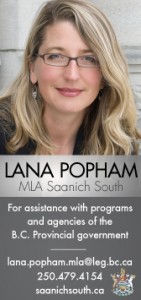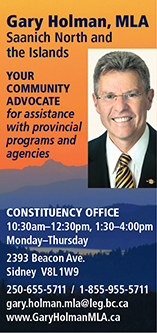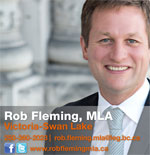Archive for January 2015

SHOULD ELECTIONS BE FAIR – or just easy to understand?
by Michele Murphy
“…it has been said that democracy is the worst form of government, except all those other forms that have been tried from time to time.”
~ Winston Churchill
Canadians have, at the very least, agreed to settle with democracy. But are all democracies created equal? Does how we execute our democracy determine the fairness of it?
Canada’s last federal election in 2011 saw the Conservative Party of Canada become the ruling party of Canada–with just 39.6% of the vote. To be more specific, that’s the confidence of 39.6% of the only 61% of eligible voters who actually voted. So in reality, our government is the declared first choice of less than 25% of the Canadian electorate.
What can a party with the confidence of only 25% of eligible Canadian voters do with that little support? As it turns out – pretty much anything they want.
Under Canada’s current voting system, known as First-Past-the-Post (FPTP), the Conservatives, with 39.6% of the vote were granted 54% of the seats in the House of Commons, a majority. As a voting block, the Conservatives can pass any vote or over-rule any vote in the lower house that they see fit. And they do.
Wendy Bergerud, local president of the Greater Victoria branch of Fair Vote Canada, has long been saying enough is enough, and now she is being joined by an increasing number of Canadians and elected officials from across party lines. ”Fair Vote Canada has been working for more than 10 years to get electoral reform on the political agenda and it is a great step forward to now have the support of the federal NDP as well as the Green Party”, says Bergerud.
First-past-the-post-voting originated in the 12th century and was adopted from Westminster. Now, some 900 years later, most major democracies have tossed it out in favour of some form of proportional voting.
The idea of democratic reform is nothing new in Canada. In BC a change to the system got as far as creating a Citizens’ Assembly to determine what type of proportional voting system the province might replace FPTP with, and then held two referenda.
The Assembly determined that the most suitable form of proportional representation for BC would be Single Transferable Vote (STV). The province then took that to the people and while more voters than not wanted the change in the 2005 referendum – the vote came in just 2% shy of the demanding 60% support that then-BC government required – a later referendum saw less support.
What happened? According to political strategist and communications specialist, and then president of the NO STV campaign, Bill Tieleman, “In brief: the giant STV ridings scared off voters, as did the incomprehensible STV voting system.”
According to members of the Citizen Assembly, there were many factors that contributed to the lack of public support for STV, not the least of which was the communication strategy of the YES campaign and its failure to meet the challenge of explaining the benefits of the new, somewhat complicated, voting system.
Fast-forward to 2014 where a national conversation on proportional representation (PR) is emerging leading up to the 2015 federal election. This past December NDP MP Craig Scott put forth the following motion in the House of Commons:
That, in the opinion of the House: (a) the next federal election should be the last conducted under the current first-past-the-post electoral system, which has repeatedly delivered a majority of seats to parties supported by a minority of voters, or under any other winner-take-all electoral system; and (b) a form of mixed-member proportional representation [MMP] would be the best electoral system for Canada.
While the motion was predictably defeated – with no Conservative support, and only 16 of 31 Liberal MPs in favour of the change – it was supported by all NDP and Green MPs and it has reignited the conversations about having fairer representation in our governments.
Along with the motion has come a commitment from Canada’s Official Opposition that they will, should they have the power as a result of the 2015 election, make 2015 the last unfair federal election in Canada.
How does the average voter make sense of all this?
“Voters simply need to understand that what we have does not serve them well. The majority of Canadian voters do not have the government that they voted for. And Canada is one of the few major democracies left that is hanging onto this archaic 12th century system that serves only those that are in power. Countries all over the world are enjoying democracies that actually reflect the values and choices of their electorate. We can do better.”
And, if you’re thinking that this is a political ploy that will work well for the parties proposing it, Victoria MP Murray Rankin explained, “No. In fact, had the last federal election used proportional representation, despite our momentous electoral gains, New Democrats would have had slightly fewer seats in Parliament today.”
This article is the first in a series of SVO articles on proportional representation. As SVO is at its best when its content is written by the Saanich/Peninsula/Sidney community, we encourage you to contribute to this series. Please consider adding your voice to the conversation.
You’ll find our submission criteria HERE
For more info:
Why Proportional Representation?
Council of Canadians Supports Fair Vote Canada’s Declaration of Voters’ Rights
MacLeans – The Case for MMP
Vancouver 24hrs – NDP Backs Loser in Prop Rep (the comments are worth reading)

Saving the Planet Over Cocktails & Appies
by Francisco Canjura
Green Drinks-Saanich Peninsula is a gathering for environmentally-conscious people to meet, network and share ideas in informal sessions over appetizers and beverages.
Green Drinks began in 1989 in London and has since expanded to a variety of countries.
Green Drinks have been taking place in Victoria for years and it was in Victoria where Alicia Cormier, Green Drinks-Saanich Peninsula organizer, developed a taste for the monthly meetings.
Cormier lived in the Saanich Peninsula and worked in Victoria at the time. However, a few years ago she made a conscious decision to reduce her carbon footprint. She decided to get a job in the Saanich Peninsula close to home.
Her decision meant that she would now attend Green Drinks-Victoria on rare occasions rather than monthly, but she missed Green Drinks and in May 2013 she decided to start a chapter in the Saanich Peninsula.
Green Drinks-Saanich Peninsula has been a success, “we get about 30 people a meeting and people range from landscapers to academics,” said Cormier. “Everyone is welcome and the great thing is that about one-third of the people that come are always new to the event.”
The meetings sometimes have guest speakers, or involve tours of local businesses or organizations, but the focus of Green Drinks is for like minded-environmentally conscious people to network and share ideas, says Cormier.
The first part of the meeting gives people a chance to interact and usually they last 20 minutes are reserved for the guest speaker.
Past speakers have included local climate change experts, green-business leaders, businesses that have made significant changes to their operations to operate in a more sustainable way, and companies that have been recognized for their environmental and ethical leadership.
Green Drinks-Saanich Peninsula’s next meeting takes place on January 27 from 5:30 p.m. to 7:30 p.m. at Zanzibar Café, 1164 Stelly’s X Road. Cost to attend is $10 and includes appetizers.
For more information on Green Drinks-Saanich Peninsula check out their Facebook page GreenDrinksSaanichPeninsula or visit www.greendrinks.org to learn more about the Green Drinks movement.
Moving Amalgamation Forward, or Not
Bringing the ballot questions back to the council chambers
by Roger Stonebanks
Voters spoke at the Nov. 15 municipal election in non-binding plebiscites on amalgamation and governance – and now councils are moving to act on the results.
“The amalgamation question response is quite clear – people are interested in information about costs and feasibility of amalgamation,” said North Saanich Mayor Alice Finall, where voters supported this question: “Are you in favour of a study, provincially funded, to investigate the feasibility, costs and implications of amalgamating the three municipalities on the Saanich Peninsula of Sidney, Central Saanich and North Saanich?”
Central Saanich voters supported this question, “Should the District of Central Saanich petition the Province to fund a cost/benefit analysis of an amalgamation of Central Saanich, North Saanich and Sidney?” Sidney voters said “Yes” to this question, “Are you in favour of a provincially funded study to investigate the feasibility, costs and implications of amalgamating the three municipalities of the Saanich peninsula?”
Mayor Finall told Saanich Voice Online that her council will spend two days in early January considering its priorities for the coming year.
“I anticipate that this will be one matter that they will discuss,” she said. “For the District to conduct the study, as stated in the referendum question, we will need to receive the necessary funding from the province. This will require us to make an application to the province. Council will need to decide whether we make this application in conjunction with the other peninsula municipalities. I am working to organize an early tri-municipal meeting which North Saanich will host.”
The District of Saanich, meanwhile, is pressing ahead with a “governance review” as a result of voter support for this question which avoided the “amalgamation” word – “Do you support Council initiating a community-based review of the governance structure and policies within Saanich and our partnerships within the Region?”
In two motions specifically referenced to the voter-approved governance question, council approved unanimously on Dec. 8, “That a governance review, in accordance with the motion on the ballot, be initiated as soon as possible, within a 90-day period.” Council also requested municipal staff “to prepare a report, as soon as possible within a 90-day period, indicating how such a review might be structured and carried out in accordance with the motion on the ballot.”
The two motions were initiated by Coun. Vic Derman who predicted at council that the governance review process will be lengthy and complex with a variety of venues available to allow the public the chance to express ideas. Webcasting council meetings could be started before the end of the review. It was important, he said, to provide the public with as much information as possible to make informed decisions.
Mayor Richard Atwell noted that in his inaugural address to council on Dec. 1 when he announced the formation of a Governance and Cooperation Review Select Committee. How this and other initiatives roll into Coun. Derman’s motion was a question, he said. Coun. Derman responded that the question put to voters did not include the formation of a Governance Committee but it will become part of the discussion once the staff report is received.
-30-
The Minister of Community, Sport and Cultural Development, Coralee Oakes, made the following official statement regarding amalgamation /governance following the Nov. 15 municipal elections:
“In the Capital Region, a number of municipalities asked ballot questions about governance structures at the local level, and results indicate many citizens in the region are open to examining changes to the local government structure and/or service delivery.
“There is always value in dialogue about whether current governance structures are meeting local community needs. There is only one taxpayer, and it is the responsibility of all levels of government to ensure the most efficient and effective delivery of public services.
“The Ministry of Community, Sport and Cultural Development is now in the process of reviewing the referendum results related to this highly complex matter in greater detail, as I am sure the newly-elected councils will wish to do so when they take office.
“I remain committed to provide the support and resources required by the newly-elected local governments, once they have had an opportunity to discuss and review the results in greater detail.”












